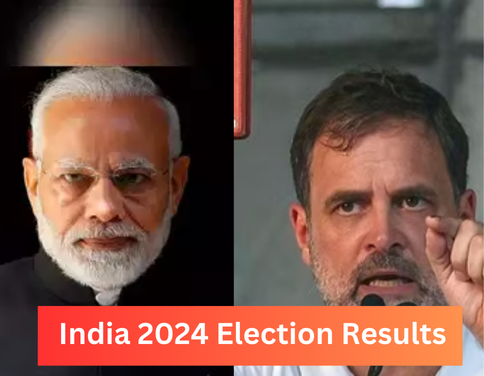As the world’s largest democracy, India’s 2024 general elections have attracted global attention, shaping the future of its 1.4 billion citizens. The results reflect not only political shifts but also socio-economic trends, regional dynamics, and aspirations of a diverse population.
Overview of Election Results
The 2024 general elections saw significant voter turnout, underscoring strong democratic participation in India. The Bharatiya Janata Party (BJP), led by Prime Minister Narendra Modi, secured a third consecutive term with a decisive victory. The BJP, along with its allies in the National Democratic Alliance (NDA), won 290 out of 543 seats in the Lok Sabha, India’s lower house of Parliament. This result, while impressive, represents a slight decrease from 2019.
The Indian National Congress (INC), headed by Rahul Gandhi, showed a remarkable resurgence by winning 120 seats. This represents an improvement from their 2019 performance and signals the party’s revival. Coalitions of regional parties also played a key role, contributing to the diversity of the new Lok Sabha, with significant victories in states such as West Bengal, Tamil Nadu and Telangana.
Key Results
Continued mandate for Modi’s leadership:
The BJP’s victory confirms the voters’ support for Narendra Modi’s continued appeal and his governance, policies and vision for India. Key factors include a focus on economic growth, national security and initiatives such as “Make in India” and “Digital India”.
Resurgence of Congress:
The improved performance of the Congress party signals a possible revival under the leadership of Rahul Gandhi. The party’s success in states such as Kerala, Punjab and Rajasthan reflects its ability to regain lost ground.
Rise of regional parties:
Regional parties have strengthened their influence, especially in states with different political landscapes. The Trinamool Congress (TMC) in West Bengal, the Dravida Munnetra Kazhagam (DMK) in Tamil Nadu and the Telangana Rashtra Samithi (TRS) in Telangana have retained their strongholds, emphasising the importance of regional issues and leaders.
Young and Women Voters:
The 2024 elections saw unprecedented participation from young and first-time voters, as well as a significant number of women voters. This demographic shift reflects changing priorities, with focus on employment, education, women’s safety and social justice.
Economic and Social Policies:
Voters’ choices highlight their expectations for economic growth, job creation, healthcare and social welfare programmes. The BJP’s promises of infrastructure development and digital transformation impressed many, while the Congress’ focus on social equity and inclusive growth attracted a significant number of people.
Regional Analysis
Northern India:
The BJP maintained its dominance in Uttar Pradesh and Bihar, although the margins narrowed. The Congress gained in Punjab and Haryana, indicating changing loyalties.
Southern India:
The DMK’s victory in Tamil Nadu and the TRS’s continued dominance in Telangana reflect the strength of regional parties. The BJP took the lead in Karnataka, while the Congress performed well in Kerala.
Eastern India:
West Bengal remained a TMC bastion, where Mamata Banerjee’s leadership was reaffirmed. The BJP and Congress made marginal gains but were unable to cause significant damage to the TMC stronghold.
Western India:
The BJP retained a majority in Maharashtra and Gujarat, but the Congress and Nationalist Congress Party (NCP) alliance also won significant seats, making for a competitive contest in the future.
Future Implications
The 2024 election results have set the stage for several important developments in India’s political landscape:
Governance and policy continuity:
The BJP’s mandate ensures continuity in governance, with the expected emphasis on economic reforms, infrastructure projects, and digital initiatives.
Opposition dynamics:
The improved performance of the Congress and the strength of regional parties suggest that the opposition will be more vibrant and challenging, potentially leading to greater accountability and policy debate.
Regional influence:
Regional parties will continue to exert significant influence, necessitating coalition politics and alliances, especially in state assemblies.
Youth and social media:
The growing participation of youth and the role of social media in shaping political narratives will be crucial in future elections, prompting parties to adapt their strategies.
Conclusion
India’s 2024 general elections have reaffirmed the democratic vibrancy and complexity of the nation. The victory of the BJP, the resurgence of the Congress and the enduring strength of regional parties paint a multifaceted political landscape. As the new government takes shape, the focus will be on fulfilling the mandate of the voters, addressing pressing issues and leading India towards sustained growth and development.
Follow Us On Instagram Follow Us On X
